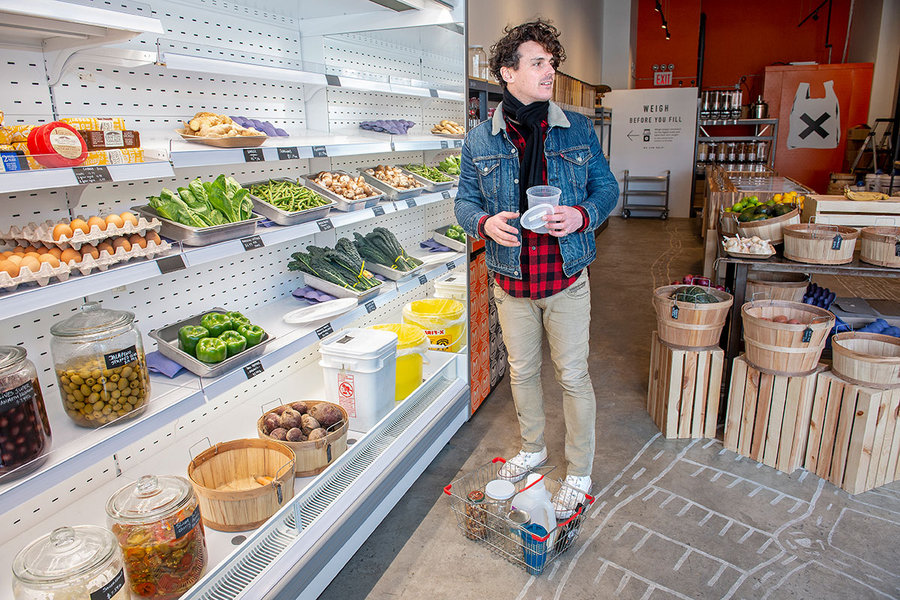Is grocery packaging necessary? Not for these shops.
By Eva Botkin-Kowacki, for The Christian Science Monitor
It’s undeniable that lightweight packaging makes grocery shopping easier. But all that plastic, paperboard, and foil comes at a steep cost to the environment.
Is there a better way? Brooklyn resident Katerina Bogatireva thinks so. She owns Precycle, a grocery store where shoppers can buy their fruits, vegetables, nuts, grains, spices, and other ingredients using their own receptacles, or with reusable containers sold there. Despite the inconvenience of carrying containers to the store, people are buying into it, says Ms. Bogatireva. Precycle has a loyalty program and already about 1,200 people have signed up.
Precycle is one of a handful of package-free shops popping up around the United States, a modern trend that harks back to an earlier era. “The advent of modern packaging is often tied to the change from crackers in a barrel at the store to prepackaged crackers that could sit on the shelf and stay fresh and crispy for a lot longer,” says Susan Selke, director of the School of Packaging at Michigan State University in East Lansing. “Could we conceivably go back to that cracker barrel-style economy? Maybe. But it would involve drastic societal changes.”
This story was produced in conjunction with Earth Beats, a Sparknews collaboration highlighting environmental solutions for Earth Day.

